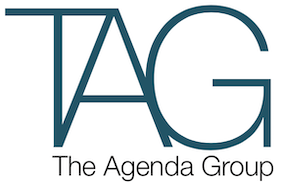Quality infrastructure is the lifeblood of a growing population. Ensuring Victoria has first class infrastructure is vital to accommodating our population growth and supporting the state’s economic, social and environmental needs.
However in the past two decades there has been reluctance by all governments to increase public debt or raise taxes to fund needed infrastructure, creating a significant infrastructure backlog.
A Victorian Auditor General’s report released last month entitled ‘Developing Transport Infrastructure and Services for Population Growth Areas’ predicted the total cost to state and local government of providing all the infrastructure needed in Melbourne’s outer growth areas at approximately $36 billion over 30 years.
Fearful of an impact on credit ratings and a corresponding electoral backlash if debt rises sharply, governments have instead utilised alternative forms of funding including tolls, privatisation, public-private partnerships, development contributions and the more recent notion of value capture.
Value capture programs seek to help fund new infrastructure by charging property owners and developers a levy to reflect the benefit they receive from improved infrastructure. The Victorian Government through its late 2012 economic statement Securing Victoria’s economy discussed the various ways that value capture could be used:
This could take the form of development rights on land associated with infrastructure improvements or other forms of value uplift which a project facilitates. In some instances local authorities could partly co-finance projects which offer significant local benefits.
Value capture mechanisms are currently the subject of a government review. When this work is publicly released it will provide an opportunity to encourage more informed public debate about value capture methods and their ability to help fund infrastructure projects.
Internationally, value capture programs are mostly applied to transit orientated development, and recent examples include the Crossrail (a major railway link under Central London) or closer to home, the Gold Coast Rapid Transit project.
The reason transport orientated development is the preferred vehicle for value capture is that a clearer nexus can be established between improved transport infrastructure and a resultant increase in property values. Modelling is becoming more sophisticated in being able to quantity the link between investment and impact on property values, and this has strengthened the case for value capture.
The key features of a typical value capture system are:
- It involves either the delivery of infrastructure that is beyond basic provision and unlikely to be provided through normal budgetary processes, or ahead of expected delivery time;
- Value capture seeks to ensure that only the properties that directly benefit from the spending actually pay for it;
- The funding contribution is generally up-front;
- Value capture has the benefit of creating more accountable public projects where spending has tangible benefits.
Whilst value capture is only one of a suite of alternative funding mechanisms that could be used to close the funding gap, it does have the potential to raise finance before construction, as the value capture mechanism is traditionally adopted and in place prior to the transportation improvement commencing.
The benefits of legislating for some form of value capture system in Victoria to fund transport infrastructure are potentially immense, but it is not without risks.
There are a range of complex legal, governance and financial issues surrounding value capture, in addition to political risks. Any Government or Opposition embarking on this course would need to build strong community support for the proposal and employ a sophisticated community and stakeholder engagement strategy.
The adversarial nature of the political system makes it difficult for Governments and Oppositions to publicly agree on matters such as new funding sources, and it would be tempting for an Opposition to characterise a new mechanism as a ‘new tax’ and run a negative campaign.
However if the infrastructure backlog is to be overcome it will require all political parties to take a long term view that the pressing need to build the infrastructure to create a more prosperous and fairer society – and the consequences of not doing this – outweighs any short term political gain.
Voters have routinely disposed of governments perceived to have not kept up with public demand for services and infrastructure. The pressure to avoid this fate may provide a platform on which to build bipartisan support for new mechanisms to fund the much needed infrastructure of the future.
